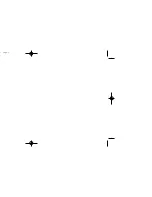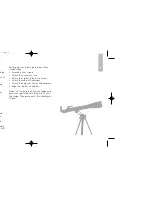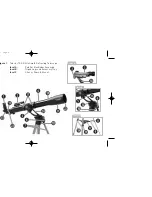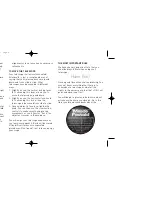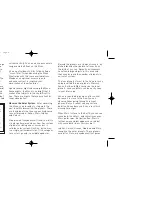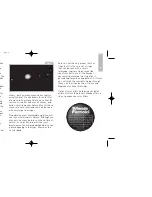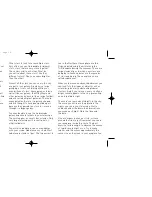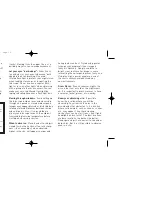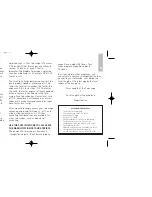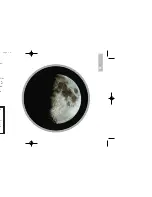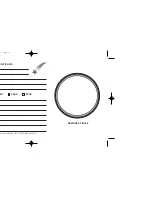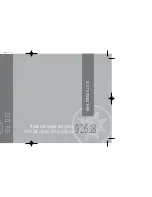
Place the object to be viewed at the
edge of the field and, without
touching the telescope, watch it drift
through the field to the other side
before repositioning the telescope
so that the object to be viewed is again
placed at the edge of the field, ready to be
further observed.
Vibrations
: Avoid touching the eyepiece
while observing through the telescope.
Vibrations resulting from such contact will
cause the image to move. Avoid observing
sites where vibrations cause image
movement (for example, near railroad
tracks). Viewing from the upper floors of a
building may also cause image movement.
Let your eyes “dark-adapt”:
Allow five or
ten minutes for your eyes to become “dark
adapted” before observing. Use a red-
filtered flashlight to protect your night vision
when reading star maps, or inspecting the
telescope. Do not use use a regular flash-
light or turn on other lights when observing
with a group of other astronomers. You can
make your own red filtered flashlight by
taping red cellophane over a flashlight lens.
Viewing through windows
: Avoid setting up
the telescope inside a room and observing
through an opened or closed window pane.
Images may appear blurred or distorted due
to temperature differences between inside
and outside air. Also, it is a good idea to
allow your telescope to reach the ambient
(surrounding) outside temperature before
starting an observing session.
When to observe
: Planets and other objects
viewed low on the horizon often lack sharp-
ness—the same object, when observed
higher in the sky, will appear sharper and
10
STAR CHARTS
Star charts and planispheres are useful for a variety of
reasons. In particular, they are a great aid in planning a
night of celestial viewing.
A wide variety of star charts are available in books, in
magazines, on the internet and on CD Roms. Meade
offers Autostar Suite
™
software. Contact your local
Meade dealer or Meade’s Customer Service department
for more information.
Astronomy and Sky and Telescope magazines print star
charts each month for up-to-the-minute maps of the
heavens.
have greater contrast. Try reducing power
(change your eyepiece) if your image is
fuzzy or shimmers. Keep in mind that a
bright, clear, but smaller image is more
interesting than a larger, dimmer, fuzzy one.
Using too high a power eyepiece is one of
the most common mistakes made by
new astronomers.
Dress Warm
: Even on summer nights, the
air can feel cool or cold as the night wears
on. It is important to dress warm or to have
a sweater, jacket, gloves, etc., nearby.
Know your observing site
: If possible,
know the location where you will be
observing. Pay attention to holes in the
ground and other obstacles. Is it a location
where wild animals, such as skunks, snakes,
etc., may appear? Are there viewing
obstructions such as tall trees, street lights,
headlights and so forth? The best locations
are dark locations, the darker the better.
Deep space objects are easiest to see under
dark skies. But it is still possible to observe
even in a city.
Telestar RB-70.qxd 10/15/08 3:23 PM Page 12
Содержание TELESTAR RB-70
Страница 1: ...N MANUAL fracting Telescope RB 70 M Page 1...
Страница 2: ...M Page 2...
Страница 15: ...or eries n a of an re 13 TY ies l nd M Page 15...
Страница 17: ...ENT GOOD POOR DRAWING OF IMAGE SAVE ORIGINAL BE SURE TO MAKE COPIES RVATION LOG M Page 17...
Страница 18: ...ENT GOOD POOR DRAWING OF IMAGE RVATION LOG M Page 18...
Страница 19: ...M Page 19...
Страница 20: ...www meade com Meade Instruments Corporation 6001 Oak Canyon Irvine California 92618 0 626 3233 M Page 20...


